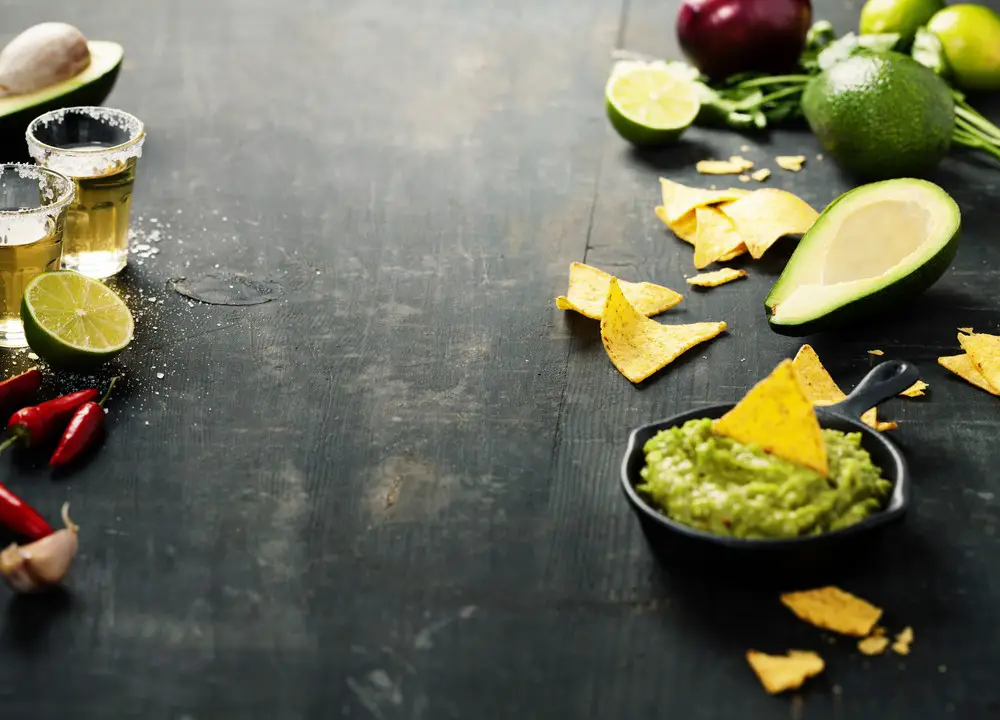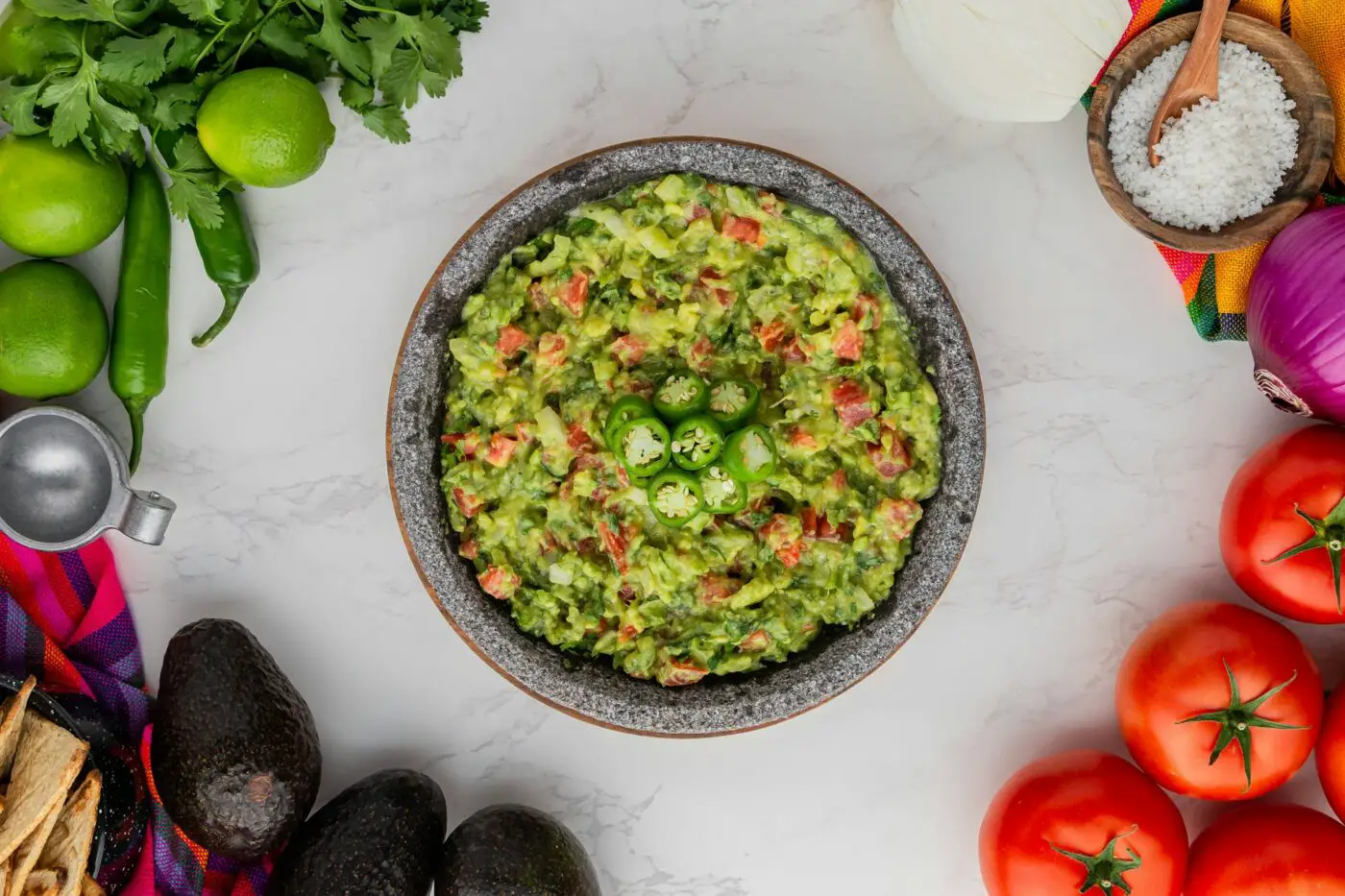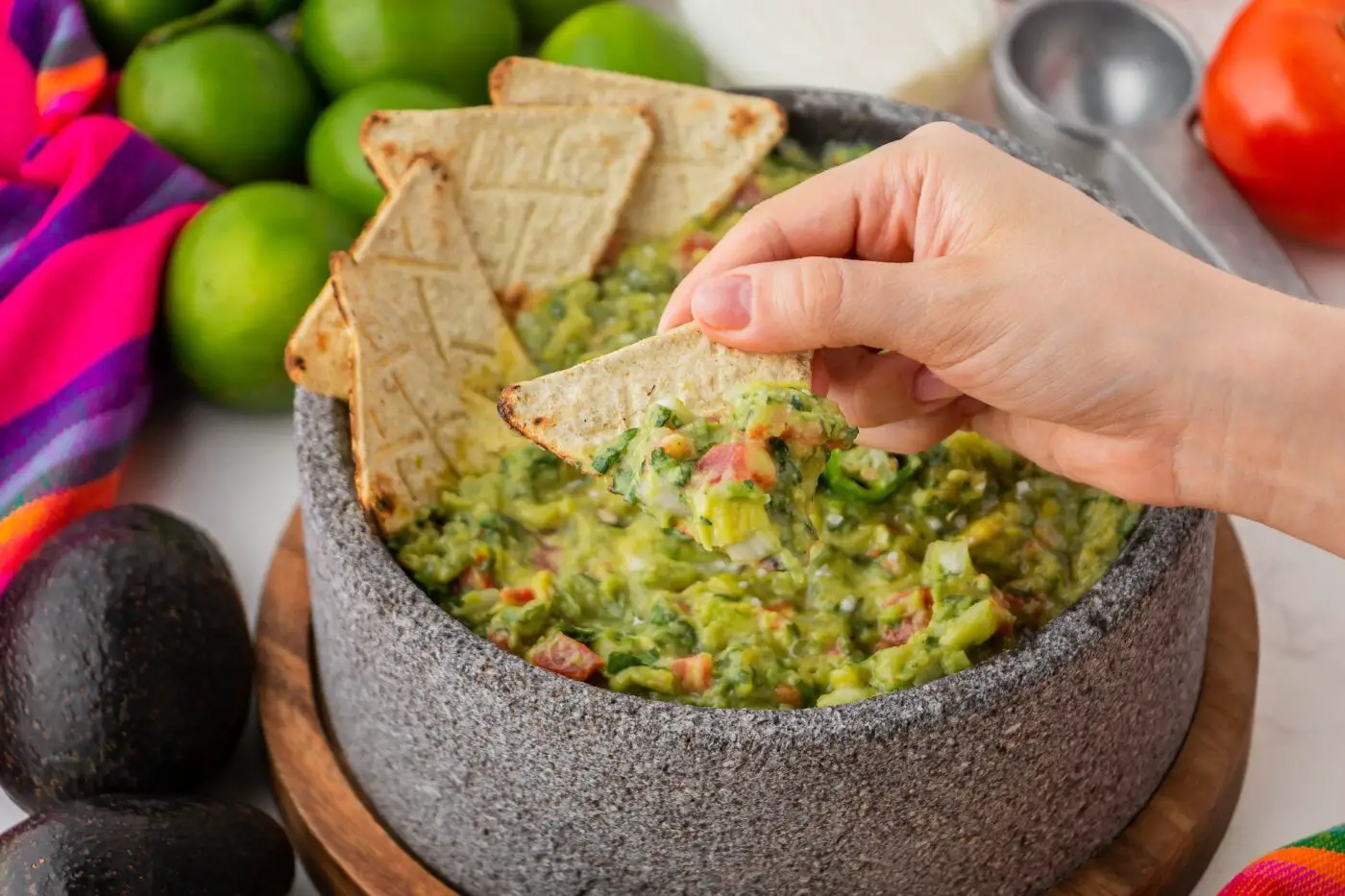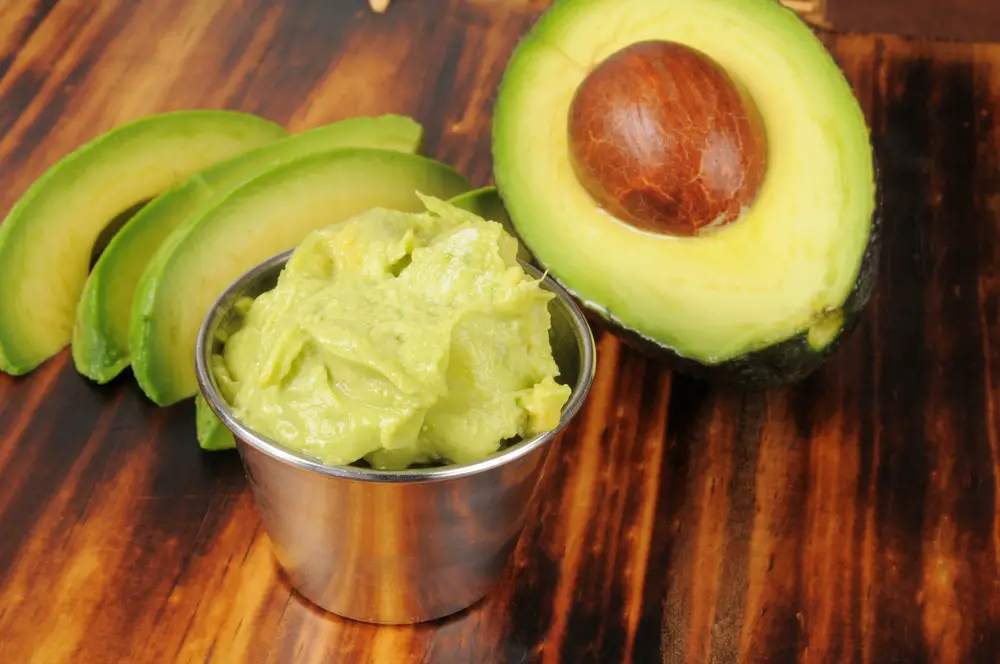Guacamole, a creamy and vibrant dip, has transcended its traditional Mexican roots to become a global favorite. Its delectable simplicity is centered on ripe avocados, a canvas for a diverse palette of seasonings. Finding the right balance of herbs, spices, and fresh ingredients is the key to unlocking the perfect guacamole flavor.
Crafting a delightful guacamole begins with ripe avocados, lime juice, and salt. This base provides a rich texture and allows the various seasonings, such as cilantro, diced tomatoes, onions, and jalapeños, to shine through. The beauty of guacamole lies in its versatility; experimenting with a variety of seasonings can tailor this dish to match your taste preferences or to complement a specific meal.
When it comes to preparation, your technique can make a difference. Gentle mashing preserves the desired texture, while thorough mixing ensures that each scoop is infused with flavor. Whether enjoyed with crunchy tortilla chips or as a condiment for an array of dishes, guacamole can elevate any eating experience. Remember, traditional guacamole recipes are inherently vegan, but evaluating store-bought options for non-vegan additives is essential. Always check for vegan certifications if you’re not making it at home.
Key Takeaways
- A blend of herbs, spices, and fresh ingredients enhances guacamole’s base of ripe avocados.
- Seasonings can be adjusted to personalize flavor, complementing a variety of dishes.
- Maintain guacamole’s vegan integrity by preparing at home or checking store-bought options for vegan certifications.

Origins of Guacamole
In tracing the roots of guacamole, you’ll discover a blend of rich history and cultural significance shaped significantly by its land of origin.
Historical Background
The story of guacamole begins with the Aztecs, who created this savory dish primarily from mashed avocados. These ingenious people understood the fruit’s nutritional value, incorporating it into their diet around the 16th century. They called it ahuacamolli, combining the Nahuatl words ahuacatl (avocado) and molli (sauce). Despite the conquerors introducing their flavors and ingredients over time, your beloved guacamole has maintained its core ingredient: the avocado.
- Pre-Columbian era: Avocado-based sauce.
- Post-Conquest: Spanish influence adds new dimensions.
Geographical Influence
Guacamole’s taste is closely tied to the geography of Mexico, where avocados flourish in the volcanic soil. The climate and terrain across different regions influence the characteristics of the avocados grown, affecting the flavor of your guacamole. From the central highlands to the coastal regions, the variety of avocados like Hass and Fuerte contributes to diverse guacamole experiences.
- Central Mexico: Rich, creamy avocados; traditional recipes.
- Coastal Regions: Larger, lighter-flavored avocados; varied textures.
Key Takeaway: Understanding guacamole’s origins enhances your appreciation for this timeless dish, reminding you that every scoop is a taste of history and geography.
Key Ingredients
The proper selection of ingredients is the cornerstone of a genuinely authentic guacamole. Each component lends unique flavor, texture, and freshness to the dip.
Avocados
The star of the show, avocados, should be ripe and creamy. Here’s what you need to remember:
- Ripeness: A ripe avocado yields slightly to gentle pressure but isn’t mushy.
- Variety: Hass avocados are popular due to their rich flavor and creamy texture.
Key Takeaway: Choosing ripe avocados is crucial for a buttery, smooth guacamole.
Citrus Juice
A splash of citrus juice adds zing and helps keep your guacamole vibrant.
- Lime or Lemon: While lime is traditional, lemon juice can work as well.
- Freshness: Always opt for fresh juice over bottled for the best taste.
Key Takeaway: Citrus juice is your secret weapon to brighten the flavor and preserve the green hue.
Onions and Garlic
These aromatic ingredients add depth and a slight kick.
- Type of Onion: Red onions are a favorite for their mild sweetness.
- Garlic Quantity: A clove or two finely minced ensures a subtle but noticeable presence.
Key Takeaway: Onions and garlic provide a flavor base that’s both savory and sweet.
Tomatoes and Peppers
Fresh tomatoes and peppers give guacamole an extra layer of texture and flavor.
- Tomato Selection: Choose firm, ripe tomatoes to avoid excess moisture.
- Pepper Variety: Jalapeños add a mild heat; remove the seeds if you prefer it milder.
Key Takeaway: To distribute the flavor evenly, tomatoes and peppers should be fresh and finely chopped.
 Essential Guacamole Seasonings
Essential Guacamole Seasonings
Crafting the perfect guacamole is an art that hinges on the right blend of seasonings. The freshness and quality of these ingredients determine the flavor profile and overall tasting experience.
Salt and Pepper
- Salt: The foundation of flavor; it enhances the natural taste of avocados.
- Pepper: Adds a subtle, spicy note that complements the creaminess of the avocados.
Key Takeaway: Always start with a pinch and adjust according to your taste preference to achieve balance.
Cilantro
- Cilantro: Fresh cilantro lends a vibrant, herby flavor essential to traditional guacamole.
Tip: If you’re not a fan of cilantro’s unique taste, you can reduce the amount or omit it entirely, though it is a classic element.
Chili Peppers
- Chili Peppers: They inject a spicy kick and depth.
- Choose from jalapeño, serrano, or a dash of cayenne powder, depending on your heat tolerance.
Strategy: Introduce chili peppers gradually to manage the heat level and to ensure it doesn’t overpower the other flavors.
Key Takeaway: Remember that each chili pepper brings a different heat level and unique taste, so pick one that suits your palate.
 Seasoning Variations
Seasoning Variations
Crafting the perfect guacamole means tweaking the seasoning to taste. Take note of regional preferences, experiment with unique add-ins, and consider diet-specific alternatives to ensure everyone can indulge in this delicious dip.
Regional Twists
In Mexico, the birthplace of guacamole, traditional seasonings include ripe avocados, lime juice, cilantro, and chilies like jalapeño or serrano. A touch of sea salt brings out the flavors. To the south in Yucatán, you might find a splash of sour orange juice, while someone in Los Angeles might stir in cumin for an earthy kick—a nod to the city’s innovative culinary scene.
- Mexico: Jalapeño, cilantro, lime juice, sea salt
- Yucatán: Sour orange juice, red onion
- Los Angeles: Cumin, black pepper
Key Takeaway: The foundation of guacamole is consistent, but each region adds its unique zest.
Creative Add-Ins
Who says you can’t mix it up? Infuse your guacamole with unconventional ingredients for a pleasant surprise. Fold in pomegranate seeds for a sweet burst, or add roasted garlic for depth. For a spirited twist, a splash of tequila can enliven the flavors.
- Sweet: Pomegranate seeds, diced mango
- Savory: Roasted garlic, sun-dried tomatoes
- Spirited: A dash of tequila, finely chopped chipotle peppers
Key Takeaway: Bold, creative add-ins can transform your guacamole into a memorable treat for your tastebuds.
Diet-Specific Alternatives
Whether catering to a vegan diet or just looking to switch things up, there are many ways to keep your guacamole diet-friendly. Swap out traditional ingredients for nutrient-packed substitutes, like chia seeds, instead of cheese for added crunch.
- Vegan: Nutritional yeast, chia seeds
- Low-Sodium: Lemon zest, fresh herbs
- Low-Fat: Greek-style yogurt made from coconut milk
Key Takeaway: A mindful choice of ingredients ensures guacamole can be a delectable part of any diet.
Preparation Techniques
When crafting the perfect guacamole, your preparation techniques can make all the difference. They influence your guacamole’s flavor depth, consistency, and overall eating experience.
Mashing Methods
- Traditional:
- Mortar and Pestle: Best for releasing flavors, yielding a consistently chunky texture.
- Fork: Handy for a quick mash, giving you control over the chunkiness.
- Modern:
- Potato Masher: Efficient for larger batches, providing an even, creamy texture.
Key Takeaway: Choose the mashing tool that aligns with your desired guacamole consistency.
Seasoning Timing
- Initial Seasoning: Mix in salt with the avocados right after mashing; it helps to enhance the natural flavors.
- Final Seasoning: Taste and add a final pinch of salt or lime juice before serving to adjust the seasoning to perfection.
Key Takeaway: Seasoning in stages potentiates the flavor and prevents over-salting.
Texture Considerations
- Consistency: Combining finely diced and coarsely mashed avocado pieces creates a pleasantly varied texture.
- Add-Ins: Ingredients like diced tomatoes or onions should be stirred gently to maintain their integrity and prevent a mushy texture.
Key Takeaway: A thoughtful approach to texture elevates your guacamole from good to unforgettable.
Guacamole Usage
Guacamole is a versatile spread that has transcended its Mexican origins to become a global favorite. Your culinary experience can be significantly enhanced by knowing how to pair it traditionally and how to incorporate it into modern dishes.
Traditional Pairings
Enjoying guacamole starts with its traditional companions. Typically, you’ll find it served with:
- Corn tortilla chips: The classic and crunchy partner.
- Tacos: A dollop on top brings a creamy texture.
- Fajitas: Complements the sizzling veggies or proteins.
A key takeaway is the importance of texture; crunchy chips or hearty tacos offer a dynamic contrast to the creamy guacamole.
Modern Culinary Uses
Guacamole isn’t just for Tex-Mex cuisine; its uses have modernized along with taste trends:
- Salad dressing: When thinned out, it makes for a rich and zesty dressing.
- On toast: Spread on whole-grain toast for a nutritious snack.
- With veggies: Dip slices of bell pepper, carrots, or cucumbers.
The modern culinary twist to guacamole has shown its versatility. Your key takeaway should be that guacamole can be more than a dip; it’s a multi-use ingredient capable of elevating simple dishes.
Storage and Preservation
When it comes to guacamole seasoning, maintaining its vibrancy and flavor is essential. Proper storage methods ensure you can savor its freshness whenever the craving strikes.
Short-Term Storage
To keep guacamole seasoning fresh in the short term, your first line of defense is an airtight container. Place your seasoning in a glass jar or a plastic container with a snug lid, which will guard against moisture and other contaminants. Refrigeration is key—store your sealed container in the fridge, ideally between 32°F (0°C) and 39°F (4°C), which is the optimal temperature range to retard spoilage.
- Key Takeaway: Seal in an airtight container and refrigerate to maintain peak freshness.
Extending Freshness
For those times you’re looking to extend your guacamole seasoning’s life beyond just a few days, consider these strategies:
- Freezing: Guacamole seasoning can be frozen solid. Spoon the mix into an ice cube tray for pre-portioned amounts, or lay it flat in a freezer bag. This method can keep the seasoning fresh for up to three months.
- Dehydrating: If you’re working with fresh herbs or spices, dehydrating them can eliminate moisture and preserve their essential flavors for an extended period. Store in a cool, dry place, away from direct sunlight.
- Vacuum sealing: Extracting air from the packaging can dramatically increase the shelf life of your seasoning. Vacuum-sealed packets are perfect for those looking to stockpile their guacamole seasoning.
Remember, even with these preservation techniques, it’s essential to label your stored seasoning with the storage date to keep track of its lifespan.
- Key Takeaway: Use freezing, dehydrating, or vacuum sealing to extend your guacamole seasoning’s usability.
Health Benefits and Nutritional Info
When you whip up a batch of guacamole, you’re not just making a tasty dip but also serving up a bowl brimming with health perks. Let’s look at what this zesty concoction has in store for your well-being.
Dietary Highlights
Avocados, the primary ingredient in guacamole, pack a nutritious punch. Here’s what you get in a typical serving (about one-half of an avocado or 100 grams):
- Fiber: Roughly 7 grams, promoting digestive health.
- Healthy fats: High in monounsaturated fats, which are heart-friendly.
- Vitamins and Minerals: A cocktail of Vitamin K, Vitamin E, Vitamin C, potassium (more than bananas!), and B vitamins.
Adding in ingredients like tomatoes, onions, and garlic introduces:
- Antioxidants: Lycopene in tomatoes, allicin in garlic, quercetin in onions.
- Additional fiber and vitamins, further optimize your nutrient intake.
Common Nutritional Questions
- Calories: An average serving of guacamole carries about 150 calories – nutrient-dense energy.
- Protein: Guacamole isn’t a protein powerhouse but offers roughly 2 grams per serving.
- Is it weight loss friendly? Absolutely! The healthy fats and fiber can help you feel full longer.
Remember, serving size matters for calorie control, so enjoy your guacamole in moderation for the best health benefits.
Shopping Guide
Equipping your kitchen with the right ingredients is the cornerstone of crafting the perfect guacamole. Quality avocados and seasonings are paramount.
Selecting Avocados
When choosing avocados for your guacamole, look for ones with a slight give when squeezed gently. The skin should be dark green and without any deep indentations or blemishes.
Ripe avocados:
- Yield to gentle pressure but aren’t overly mushy.
- Uniform in color.
Avoid avocados that feel hollow or have recessed areas, as these may be overripe with browned interiors.
Key Takeaway: Good guacamole starts with ripe, uniform avocados.
Finding Quality Seasonings
For seasoning, freshness is essential. Search for organic options, as they often offer superior flavor profiles.
Ideal seasonings for guacamole:
- Cilantro: Brings a fresh, citrusy taste.
- Sea Salt: Enhances the avocado flavor.
- Lime Juice: Adds brightness and prevents browning.
- Cumin: Provides a hint of earthiness.
Lime juice and sea salt are crucial; they’ll bring out the avocados’ creamy texture and rich flavor. Make sure your lime juice is freshly squeezed for that zestful tang.
Key Takeaway: Fresh, high-quality seasonings elevate the flavors of your guacamole.
Homemade vs. Store-Bought
Regarding guacamole, choosing between homemade and store-bought options can impact flavor, cost, and convenience. Understanding these differences can help you make a choice that suits your taste and lifestyle.
Taste Comparison
Homemade Guacamole:
- Freshness: Using fresh ingredients, homemade guacamole usually has a more vibrant flavor. Ripe avocados, freshly squeezed lime juice, and crisp onions are key for that bright, just-made taste.
- Customization: You’re the chef so you can adjust the ingredients. Want more garlic? Go for it. Prefer a kick of cilantro? Add a handful.
- No Preservatives: Since you control the ingredients, you can make your guacamole without any additives or preservatives, keeping the flavor natural.
Store-Bought Guacamole:
- Consistency: Pre-made guacamole can offer a consistent flavor, which some find reliable and comforting.
- Seasoning: Manufacturers often use a specific blend of seasonings, including various spices and preservatives that change the expected taste profile. Be sure to check that the product is vegan.
Key Takeaway: If you’re chasing a personalized taste experience, homemade guacamole gives you the palette to paint your perfect flavor profile.
Cost and Convenience
Budget Considerations:
- Homemade guacamole can be more cost-effective, especially if you buy avocados and other ingredients in bulk.
- Store-bought guacamole is often pricier due to the convenience factor and the manufacturing process.
Time and Effort:
- Making guacamole at home requires time to prep and mix ingredients. For some, this process is a labor of love.
- Store-bought options are all about saving time. If you’re in a rush or not up for the task, grabbing a pre-made tub can be a real time-saver.
Availability:
- Ingredients for homemade guacamole are generally available year-round in most grocery stores.
- Store-bought guacamole can be found in nearly every supermarket, often in multiple brands and varieties.
Key Takeaway: If time is of the essence or you’re not one to chop and dice, store-bought guacamole can be a handy alternative. Conversely, rolling up your sleeves and making it from scratch might save you a few bucks and give you control over the final product.
Serving and Presentation
When you’re ready to serve your guacamole, pay mind to not just the taste but also how you present it. Your choice of dishware and garnishing can take your guacamole from good to great.
Dishware and Utensils
To begin with, let’s talk dishware. Opt for a wide, shallow bowl that allows easy access for dipping. A ceramic dish or a traditional molcajete brings an authentic touch. A silver or stainless-steel spoon works well for scooping and serving, but if you’re going for a rustic feel, a wooden spoon fits perfectly.
- Ceramic Bowl: Enhances the visual appeal.
- Molcajete: Adds authenticity.
- Serving Spoon: Should be sturdy for scooping.
Garnishing Tips
Garnishing is like the cherry on top — it’s your chance to make a visual impact. Avocado slices, a sprinkle of red pepper flakes, or a dash of fresh cilantro can add color and texture, giving your guacamole an inviting look.
- Avocado Slices: Lay them on top for a fresh look.
- Red Pepper Flakes: A pinch for a bit of heat and color.
- Fresh Cilantro: Chop finely and sprinkle to enhance flavor.
Key Takeaway: When serving guacamole, presentation is key. Keep it accessible and appealing to complement the delicious flavors.
Frequently Asked Questions
In this section, you’ll find concise answers to common inquiries about guacamole seasoning to help you enhance your guacamole-making experience.
What are the essential ingredients in a homemade guacamole seasoning mix?
You need ground cumin, garlic powder, onion powder, and coarse sea salt to craft your guacamole seasoning mix. Add crushed red pepper flakes and a hint of lime zest for a touch of zest.
Key takeaway: Combining cumin, garlic, onion, salt, pepper flakes, and lime zest makes a robust homemade mix.
Which store-bought guacamole seasoning packet is considered the best?
Many guacamole fans rave about the Frontera Gourmet Guacamole Mix for its authentic flavor. It’s praised for its balance of spices and the freshness it imparts.
Key takeaway: Frontera Gourmet Guacamole Mix is highly regarded for its fresh and balanced flavors.
How can one create a spicy guacamole seasoning?
To bring the heat to your guacamole, incorporate finely minced jalapeño or red chili powder to your seasoning blend. Adjust the amount to match your spice tolerance.
Key takeaway: Jalapeños or chili powder can efficiently kick up the heat in your guacamole.
Are there any preferred brands for guacamole seasoning at Walmart or Trader Joe’s?
Due to their taste and organic ingredients, shoppers often prefer Great Value Organic Guacamole Seasoning at Walmart and the Trader Joe’s Guacamole Starter seasoning packet.
Key takeaway: Walmart and Trader Joe’s brands are favorites for organic and flavorful choices.
What is a recommended way to enhance the flavor of bland guacamole?
If your guacamole lacks punch, add a squeeze of fresh lime juice or a sprinkle of coriander. These ingredients will invigorate the guacamole with bright and herby notes.
Key takeaway: Lime juice or coriander can revive the flavor of bland guacamole.
How does Litehouse guacamole seasoning compare to others available on the market?
Litehouse guacamole seasoning holds its own with a blend that emphasizes dried herbs and hints of citrus. It offers a distinct taste that differentiates it from other blends.
Key takeaway: Litehouse offers a unique herb and citrus flair distinct from other seasonings.

